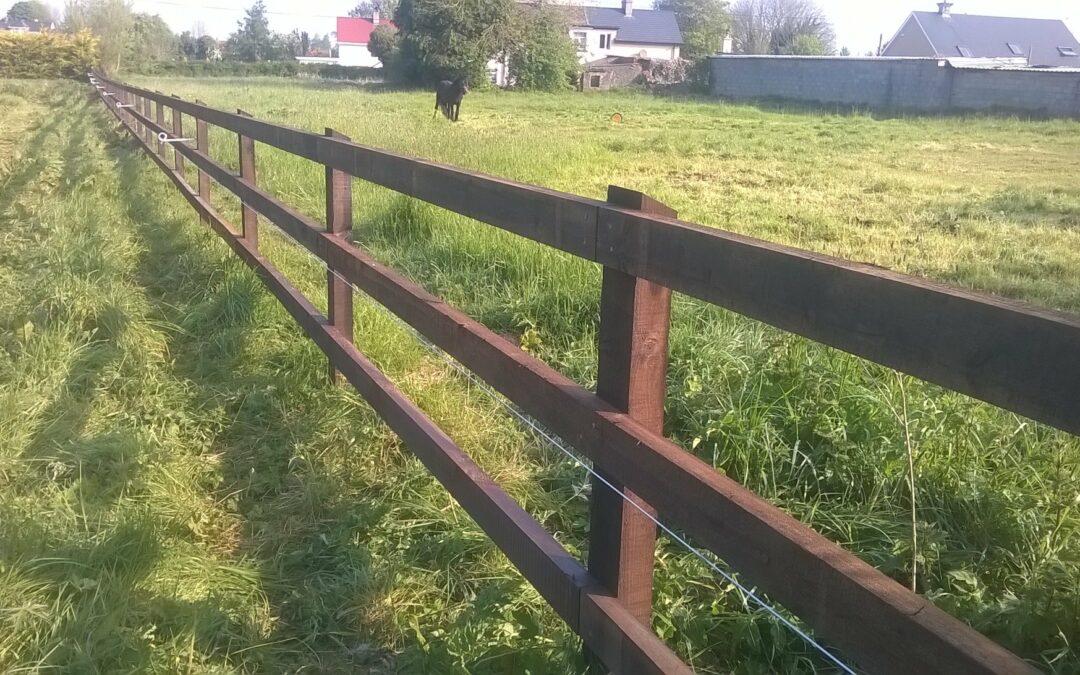As we move closer to Autumn, farmers should carefully plan their next few weeks to ensure that they are ready for the months ahead. There are a number of factors for farmers to consider but planning and implementing grassland management is a must.
Infrastructure
Firstly, August is a great month to look at grazing infrastructure on farms. This time of year is generally quieter than the start of the Summer and long days make it ideal for tackling changes to fields, paddocks, grassland etc. Farmers may want to increase their access points. Having a central roadway or spur roads with multiple access to paddocks means that the farmer can move livestock easily. Ideally all sections should have access to a roadway and water trough without going back over grazed land.
Having a better grazing infrastructure means the farmer can leave animals out longer in the Autumn and put out earlier in the Spring. Teagasc estimates that for every day at grass in the Autumn for 100 livestock units, earns the farmer €200 per day. This figure comes from the difference in feed costs and extra animal performance from grass.
Fertiliser
Now is also the time to plan the last applications of granular and liquid fertiliser. The amount of nitrogen (N) spread in August will determine how much grass farmers have for their last rotations. This decision depends on the stocking rate of the farm, quality of land, grass supply and yearly allowance. The closing date for the spreading of chemical fertiliser is September 15th. However, farmers should be aware that international fertiliser prices remain at record high so this may be more costly than other years.
Slurry
In the case of slurry, farmers can apply early to help build grassland. Slurry is still the cheapest form of nitrogen (N), phosphorous (P) and potassium (K) on farms. Depending on the amount of slurry left in tanks, farmers should make a plan to spread before the closing date in October. Slurry should be spread where grass cover is low and especially where soil is deficient in P and K. Farmers can spread slurry on heavier covers – up to 1,200kg DM/ha – using applicators such as the trailing shoe in dry weather.
Reseeding
Farmers may also be considering reseeding. Replacing an old unproductive pasture with a grass or clover sward must be seen as a long-term investment. Benefits of a reseed include being able to provide more grass in scarcity periods, support higher stocking rate and higher animal performance and liveweight gain. Farmers should look at their soil fertility and choose a seed mixture to best suit their needs. Reseeding should be on the agenda for early August as weather conditions tend to deteriorate towards September.
For a successful reseed, weather conditions must allow the seed to germinate. As reseeding can be considered costly, it is important that the farmer makes every effort to ensure it is successful. Paddocks should be grazed out before reseeding. Depending on the land it may need to be ploughed, disced, levelled, rolled, picked for stones etc. Reseeding can be done by a variety of methods such as ploughing or minimum cultivation, followed by power harrowing. Stitching is another method where seed is direct drilled into an existing pasture, this may be suited to stony ground where ploughing cannot be carried out. Whatever technique is used; the seedbed needs to be firm, fine, free of trash etc. Farmers can contact their local Teagasc or agricultural adviser to discuss their grassland management options and seek advice.
Contact FRS
FRS Fencing have serviced the contract fencing needs of farmers for 40 years and provide top quality DIY fencing materials and supplies coupled with expert fencing advice. For more advice and a free quotation on your fencing requirements visit www.frsfencing.ie

